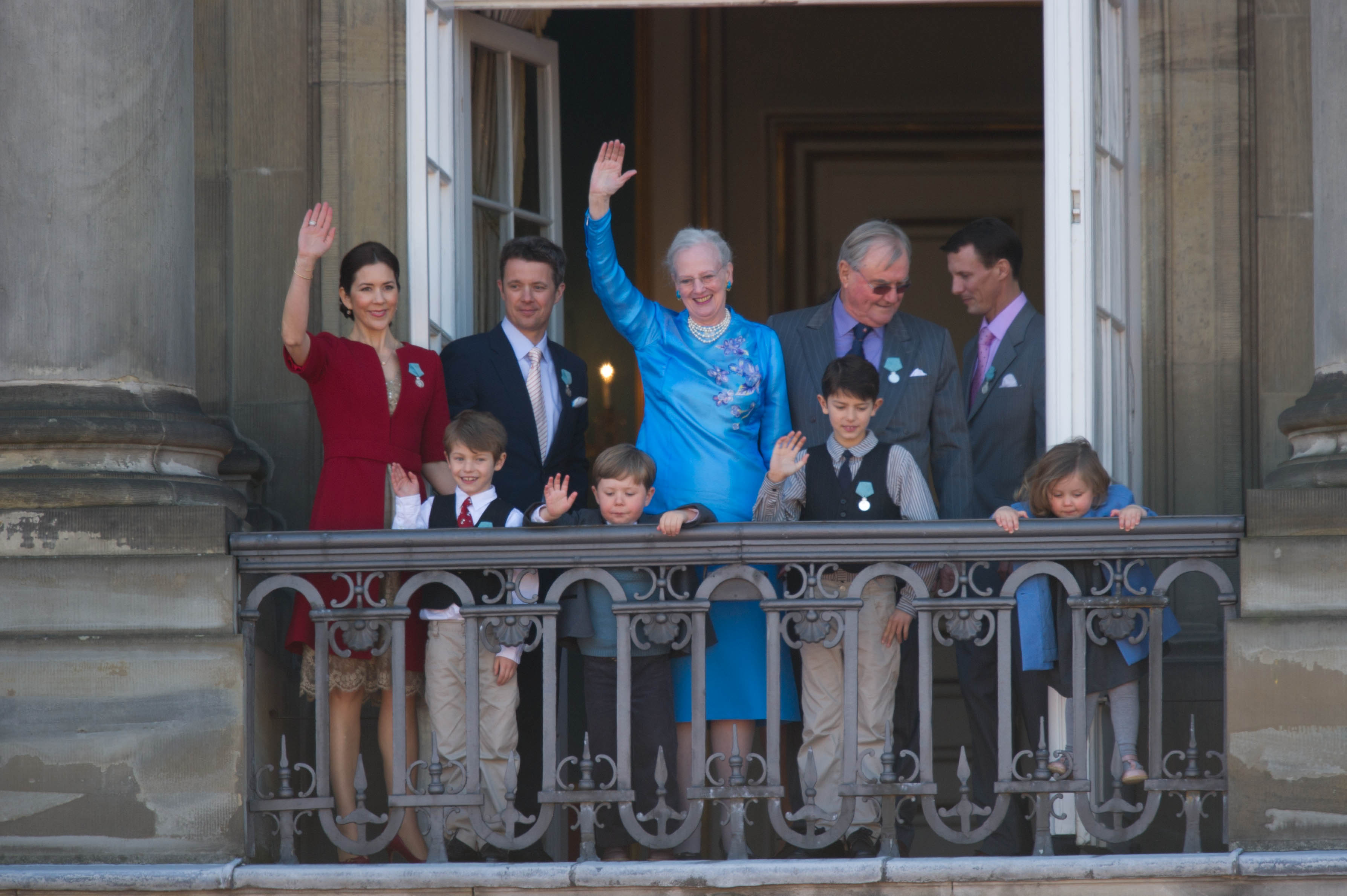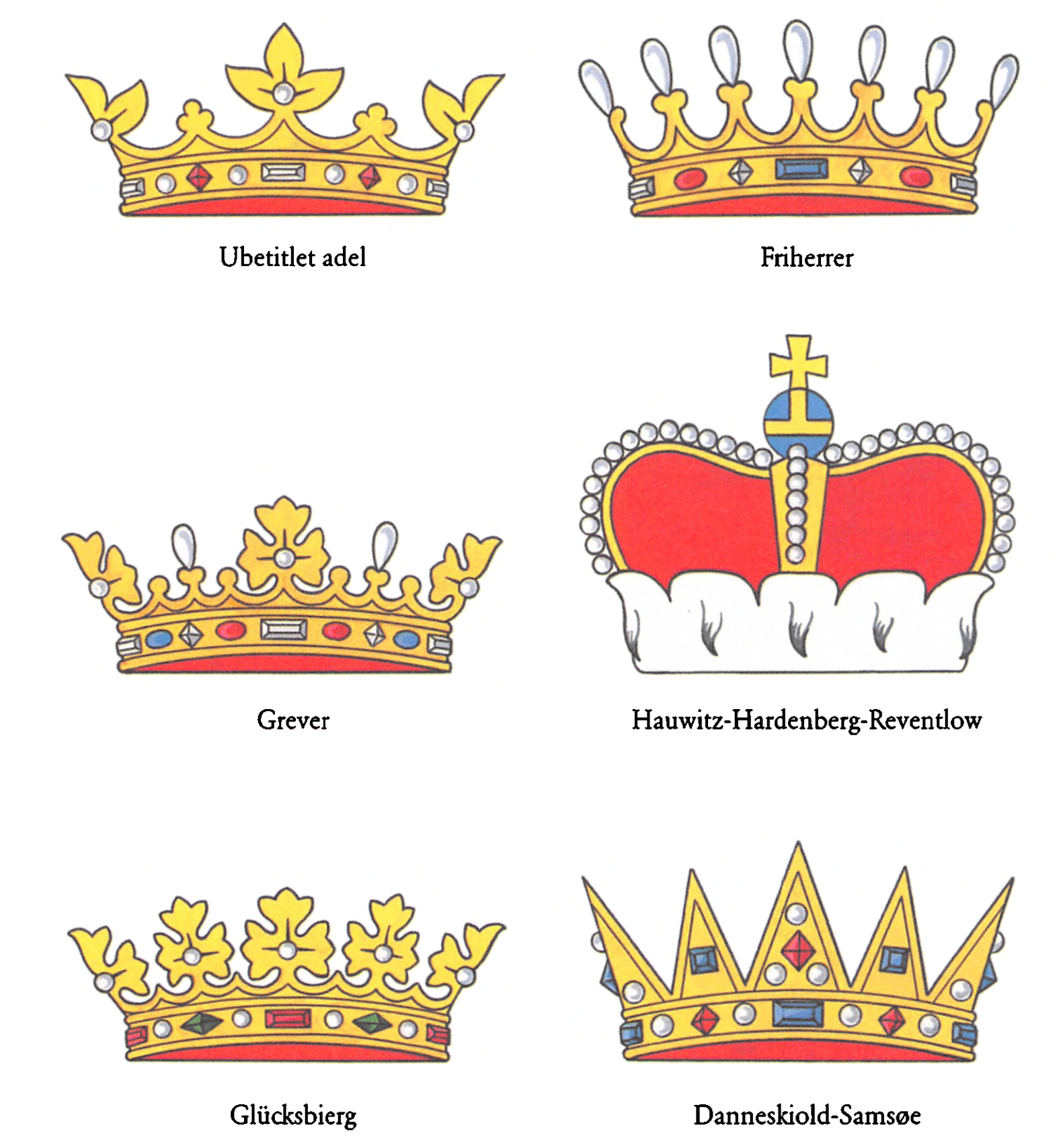|
Prince Erik, Count Of Rosenborg
Prince Erik, Count of Rosenborg (Erik Frederik Christian Alexander; 8 November 1890 – 10 September 1950) was a Danish prince. He was born in Copenhagen, a son of Prince Valdemar of Denmark and Princess Marie of Orléans. Early life Prince Erik was born on 8 November 1890, in the Yellow Palace, an 18th-century town house at 18 Amaliegade, immediately adjacent to the Amalienborg Palace complex in Copenhagen. He was the third child of Prince Valdemar of Denmark, and his wife Princess Marie of Orléans. His father was a younger son of King Christian IX of Denmark and Louise of Hesse-Kassel, and his mother was the eldest daughter of Prince Robert, Duke of Chartres and Princess Françoise of Orléans. His parents' marriage was said to be a political match. Marriage and issue As was then customary in the Danish royal house, Erik renounced his rights to the throne when he chose to take a commoner as wife, marrying in Ottawa, Ontario, on 11 February 1924 Lois Frances Booth (Ott ... [...More Info...] [...Related Items...] OR: [Wikipedia] [Google] [Baidu] |
Count Of Rosenborg
The Danish royal family is the dynastic family of the monarch. All members of the Danish royal family except Queen Margrethe II hold the title of ''Prince/Princess of Denmark''. Dynastic children of the monarch and of the heir apparent are accorded the style of ''His/Her Royal Highness'', while other members of the dynasty are addressed as ''His/Her Highness''. The Queen is styled ''Her Majesty''. The Queen, her siblings and her descendants belong to the House of Glücksburg, which is a branch of the Royal House of Oldenburg. The Queen's children and male-line descendants also belong agnatically to the family de Laborde de Monpezat, and were given the concurrent title ''Count/Countess of Monpezat'' by royal decree on 30 April 2008. The Danish royal family receives remarkably high approval ratings in Denmark, ranging between 82% and 92%. Main members The Danish royal family includes: * The Queen (the monarch) ** The Crown Prince and Crown Princess (the Queen's son and daughter ... [...More Info...] [...Related Items...] OR: [Wikipedia] [Google] [Baidu] |
John Rudolphus Booth
John Rudolphus Booth (April 5, 1827 – December 8, 1925) was a Canadian lumber tycoon and railroad baron. He controlled logging rights for large tracts of forest land in central Ontario, and built the Canada Atlantic Railway (from Georgian Bay via Ottawa to Vermont) to extract his logs and to export lumber and grain to the United States and Europe. In 1892, his lumber complex was the largest operation of its kind in the world. He was familiar with all aspects of his industry, and one observer noted: Early life J. R. Booth was born on a farm at Lowes near Waterloo ( Shefford County) in the Eastern Townships of Quebec. His parents, John and Eleanor Booth (''née'' Rowley) were Irish immigrants, had a number of children (variously reported as 5, 6 and 8); his paternal grandparents were John Booth and Elizabeth Hill; his patrilineal grandfather, Robert Booth who married Eleanor Taylor, was the son of Peter Booth, whose father, James Booth, a Freeman of Dublin, was 4th so ... [...More Info...] [...Related Items...] OR: [Wikipedia] [Google] [Baidu] |
Kuwait
Kuwait (; ar, الكويت ', or ), officially the State of Kuwait ( ar, دولة الكويت '), is a country in Western Asia. It is situated in the northern edge of Eastern Arabia at the tip of the Persian Gulf, bordering Iraq to the north and Saudi Arabia to the south. Kuwait also shares maritime borders with Iran. Kuwait has a coastal length of approximately . Most of the country's population reside in the urban agglomeration of the capital city Kuwait City. , Kuwait has a population of 4.45 million people of which 1.45 million are Kuwaiti citizens while the remaining 3.00 million are foreign nationals from over 100 countries. Historically, most of present-day Kuwait was part of ancient Mesopotamia. Pre-oil Kuwait was a strategic trade port between Mesopotamia, Persia and India. Oil reserves were discovered in commercial quantities in 1938. In 1946, crude oil was exported for the first time. From 1946 to 1982, the country underwent large-scale modernization, largely b ... [...More Info...] [...Related Items...] OR: [Wikipedia] [Google] [Baidu] |
Svendborg
Svendborg () is a town on the island of Funen in south-central Denmark, and the seat of Svendborg Municipality. With a population of 27,300 (1 January 2022), Svendborg is Funen's second largest city.BY3: Population 1st January by urban areas, area and population density The Mobile Statbank from Statistics Denmark In 2000 Svendborg was declared "Town of the year" in Denmark, and in 2003 it celebrated its 750th anniversary as a . By road, Svendborg is located southwest of |
Seychelles
Seychelles (, ; ), officially the Republic of Seychelles (french: link=no, République des Seychelles; Creole: ''La Repiblik Sesel''), is an archipelagic state consisting of 115 islands in the Indian Ocean. Its capital and largest city, Victoria, is east of mainland Africa. Nearby island countries and territories include the Comoros, Madagascar, Mauritius, and the French overseas departments of Mayotte and Réunion to the south; and Maldives and the Chagos Archipelago (administered by the United Kingdom as the British Indian Ocean Territory) to the east. It is the least populated sovereign African country, with an estimated 2020 population of 98,462. Seychelles was uninhabited prior to being encountered by Europeans in the 16th century. It faced competing French and British interests until coming under full British control in the late 18th century. Since proclaiming independence from the United Kingdom in 1976, it has developed from a largely agricultural society to ... [...More Info...] [...Related Items...] OR: [Wikipedia] [Google] [Baidu] |
Mahé, Seychelles
Mahé is the largest island of Seychelles, with an area of , lying in the northeast of the Seychellean nation in the Somali Sea part of the Indian Ocean. The population of Mahé was 77,000, as of the 2010 census. It contains the capital city of Victoria and accommodates 86% of the country's total population. The island was named after Bertrand-François Mahé de La Bourdonnais, a French governor of Isle de France (modern-day Mauritius). History Mahé was first visited by the British in 1609 and not visited by Europeans again until Lazare Picault's expedition of 1742. The French navy frégate '' Le Cerf'' (English: The Deer) arrived at Port Victoria on 1 November 1756. On board was Corneille Nicholas Morphey, leader of the French expedition, which claimed the island for the King of France by laying a Stone of Possession on Mahé, Seychelles’ oldest monument, now on display in the National Museum, Victoria. In August 1801 a Royal Navy frigate HMS ''Sibylle'' captured t ... [...More Info...] [...Related Items...] OR: [Wikipedia] [Google] [Baidu] |
Count
Count (feminine: countess) is a historical title of nobility in certain European countries, varying in relative status, generally of middling rank in the hierarchy of nobility. Pine, L. G. ''Titles: How the King Became His Majesty''. New York: Barnes & Noble, 1992. p. 73. . The etymologically related English term "county" denoted the territories associated with the countship. Definition The word ''count'' came into English from the French ''comte'', itself from Latin ''comes''—in its accusative ''comitem''—meaning “companion”, and later “companion of the emperor, delegate of the emperor”. The adjective form of the word is "comital". The British and Irish equivalent is an earl (whose wife is a "countess", for lack of an English term). In the late Roman Empire, the Latin title ''comes'' denoted the high rank of various courtiers and provincial officials, either military or administrative: before Anthemius became emperor in the West in 467, he was a military ''comes ... [...More Info...] [...Related Items...] OR: [Wikipedia] [Google] [Baidu] |
Danish Nobility
Danish nobility is a social class and a former estate in the Kingdom of Denmark. The nobility has official recognition in Denmark, a monarchy. Its legal privileges were abolished with the constitution of 1849. Some of the families still own and reside in castles or country houses. A minority of nobles still belong to the elite, and they are as such present at royal events where they hold court posts, are guests, or are objects of media coverage, for example Kanal 4's TV-hostess Caroline Fleming née Baroness Iuel-Brockdorff. Some of them own and manage companies or have leading positions within business, banking, diplomacy and NGOs. Historians divide the Danish nobility into two categories: ancient nobility ( da, uradel) and letter nobility ( da, brevadel) based on the way they achieved nobility. Another status based categorization distinguishes between higher and lower nobility ( da, højadel, lavadel). "Ancient nobility" refer to those noble families that are known from t ... [...More Info...] [...Related Items...] OR: [Wikipedia] [Google] [Baidu] |
Chamberlain (office)
A chamberlain (Medieval Latin: ''cambellanus'' or ''cambrerius'', with charge of treasury ''camerarius'') is a senior royal official in charge of managing a royal household. Historically, the chamberlain superintends the arrangement of domestic affairs and was often also charged with receiving and paying out money kept in the royal chamber. The position was usually honoured upon a high-ranking member of the nobility (nobleman) or the clergy, often a royal favourite. Roman emperors appointed this officer under the title of ''cubicularius''. The Chamberlain of the Holy Roman Church enjoys very extensive powers, having the revenues of the papal household under his charge. As a sign of their dignity, they bore a key, which in the seventeenth century was often silvered, and actually fitted the door-locks of chamber rooms. Since the eighteenth century, it has turned into a merely symbolic, albeit splendid, rank-insignia of gilded bronze. In many countries there are ceremonial posts ... [...More Info...] [...Related Items...] OR: [Wikipedia] [Google] [Baidu] |






